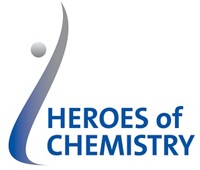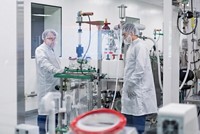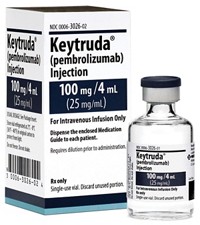Advertisement
Grab your lab coat. Let's get started
Welcome!
Welcome!
Create an account below to get 6 C&EN articles per month, receive newsletters and more - all free.
It seems this is your first time logging in online. Please enter the following information to continue.
As an ACS member you automatically get access to this site. All we need is few more details to create your reading experience.
Not you? Sign in with a different account.
Not you? Sign in with a different account.
ERROR 1
ERROR 1
ERROR 2
ERROR 2
ERROR 2
ERROR 2
ERROR 2
Password and Confirm password must match.
If you have an ACS member number, please enter it here so we can link this account to your membership. (optional)
ERROR 2
ACS values your privacy. By submitting your information, you are gaining access to C&EN and subscribing to our weekly newsletter. We use the information you provide to make your reading experience better, and we will never sell your data to third party members.
Awards
ACS celebrates its 2022 Heroes of Chemistry
Industrial chemists are honored for contributions to packaging, breast cancer treatment, COVID-19 treatment and prevention, and dental cements
by Nina Notman, special to C&EN
December 1, 2022
| A version of this story appeared in
Volume 100, Issue 43

Teams of chemical scientists from Dow, Eli Lilly and Company, Merck & Co., Moderna, Pfizer, and 3M are being recognized with 2022 Heroes of Chemistry Awards. These researchers’ contributions have led to advancements in lighter, flexible packaging materials; breast cancer treatment; COVID-19 treatment and prevention; and dental resin cements.
The Heroes of Chemistry Awards are the American Chemical Society’s highest honor for industrial chemists, who make up a significant proportion of its membership. The program, started in 1996, is sponsored by the ACS Board Committee on Corporation Associates and celebrates industrial advances that have benefited humankind.
Here’s a look at the commercial products being honored this year:
Dow: Elite and Innate

Elite and Innate are linear low-density polyethylene resins whose molecular structures are precisely tailored by Dow scientists to meet the requirements of a wide range of applications for lighter, flexible packaging. Their uses include stretch wraps for pallets, heavy-duty shipping bags, a variety of food packaging applications, and hygiene products such as diapers.
The Elite range hit the market in the late 1990s. Two innovations made these resins possible: the invention of Ziegler-Natta catalysts for polymer synthesis and Dow’s novel multireactor manufacturing process. Together, these allowed scientists to tailor the chemical structures of each polymer building block with much greater control than was previously possible.
For example, including precise molecular fractions allowed scientists to create thinner films with high performance, says Jackie deGroot, a Dow senior fellow who led the application development of the first portfolio of Elite resins.
Later, a new bis(biphenyl phenol) catalyst enabled new polymer architectures that resulted in further performance enhancements. These resins were launched under the brand name Innate in 2016. “Today, 30% less plastic is needed to make shipping sacks while providing the same or enhanced level of protection to the valuable products they are carrying,” deGroot says.
Dow says that because of Elite and Innate resins’ thinness, they significantly reduce carbon dioxide emissions from transportation. These resins are also easily recyclable and are replacing less recyclable materials in consumer end products.
Lilly: Verzenio

Breast cancer was the most common cancer type in 2020: 2.26 million new cases were diagnosed globally, according to the World Health Organization. Most breast cancers are hormone dependent. Despite hopes that the hormone therapies introduced in the 1980s and 1990s would see these cancers become curable, about 20% of people diagnosed with early hormone-dependent breast cancer still experience tumor recurrences or metastatic spread.
In September 2017, the US Food and Drug Administration approved Lilly’s selective CDK4/6 inhibitor Verzenio (abemaciclib) for the treatment of advanced and metastatic breast cancer. In October 2021, it became the first and only CDK4/6 inhibitor approved for treating people with early-stage breast cancer deemed at a high risk of recurrence.
The CDK4 and CDK6 pathways play an important role in cell proliferation in hormone-dependent breast cancer. With this pathway blocked, researchers can prevent the growth of cancer cells or even kill them, shrinking the tumors.
“Early breast cancer patients at high risk of tumor relapse live every day worrying that their cancer could come back somewhere else in the body,” says Alfonso de Dios, Lilly’s vice president of medicinal chemistry and the research lead for the team that discovered Verzenio. Treatment with Verzenio was shown in Phase 3 trials to reduce the risk of cancer returning by 37% compared with hormone therapy alone.
De Dios describes Verzenio’s approval as “a dream that came true.” He adds, “Knowing that Verzenio was going to be able to help many patients made all the blood, sweat, and tears involved in the program so well worth it.”
Merck: Lagevrio

On Nov. 4, 2021, the UK became the first country to grant conditional authorization for an oral antiviral pill targeting COVID-19. The drug, Lagevrio (molnupiravir), has since been approved or authorized for conditional or emergency use in more than 25 countries, including the US, Japan, and Australia. To date, more than 9 million treatment courses of Lagevrio have been shipped, and it has been administered to more than 2 million people globally.
Lagevrio works by inserting itself in the RNA of the virus SARS-CoV-2 and causing errors that inhibit its replication. Keeping virus levels low in the body reduces disease severity.
Emory University’s George Painter invented Lagevrio. When the pandemic started, it was already in preclinical studies against other RNA viruses, including influenza viruses. In early 2020, Painter partnered with Ridgeback Biotherapeutics to put Lagevrio into clinical trials against SARS-CoV-2. Merck came on board in mid-2020 to accelerate Lagevrio through the clinical trial process.
Concurrently, Merck scientists worked on rapidly developing and scaling up the manufacturing process. “We went from basically zero to metric-ton scale in about 4 months,” says L.-C. Campeau, head of Merck’s small-molecule process R&D.
A key challenge for Campeau’s team was developing a higher-yielding manufacturing route for Lagevrio’s active ingredient. “From the same raw materials, we can make almost three times as much active pharmaceutical ingredient” as was previously possible, Campeau says. Additionally, the team improved the sustainability of the drug manufacturing process. “That’s something we’re particularly proud of—a back-of-the-envelope calculation found that we’ve obviated well over 3,000 metric tons of waste associated with the production of this drug so far,” Campeau says.
Moderna: Spikevax

On Dec. 18, 2020, Moderna’s Spikevax vaccine became the second COVID-19 vaccine to be granted an emergency use authorization in the US. By the end of 2021, approximately 807 million doses of this vaccine had been shipped worldwide, and 25% of those doses went to low- and middle-income countries.
Spikevax contains messenger RNA (mRNA) that encodes for the SARS-CoV-2 spike protein. Once inside human cells, the spike protein is produced and then triggers an immune response that prepares the body to fight the real virus.
On March 16, 2020, the first patient was dosed with Moderna’s COVID-19 vaccine candidate in a Phase 1 trial. It was earlier work at Moderna that allowed the vaccine to be developed so rapidly. A key aspect was the 2015 design and optimization of a new class of lipids for delivering mRNA payloads for RNA vaccines. Before January 2020, Moderna was already using these lipids in other vaccine candidates that are in clinical trials against viruses that include cytomegalovirus and Zika virus.
“One could spend a lifetime of a successful career in the pharma industry without directly contributing to a marketed product, and it would still be a meaningful and rewarding line of work,” says Gabor Butora, senior director of process chemistry in lipid nanoparticle development at Moderna. “I think I speak for many when I say that having the opportunity to be a part of the team that helped to contain this pandemic is an honor, indeed a highlight of my scientific career.”
Pfizer: Paxlovid

On Dec. 22, 2021, Paxlovid became the first oral antiviral pill for COVID-19 to be granted an emergency use authorization in the US. This drug is now approved or authorized for conditional or emergency use in over 70 countries, and more than 34.5 million treatment courses of Paxlovid have been shipped to date.
Paxlovid contains two antiviral molecules—nirmatrelvir and ritonavir—that both target the main protease of the virus SARS-CoV-2. Nirmatrelvir chops up the protease into small peptide fragments, preventing it from being able to replicate, while ritonavir serves as a booster to help nirmatrelvir remain in the body for a longer period.
Ritonavir was already used in a combination treatment for HIV/AIDS. Nirmatrelvir, however, was invented specifically for treating COVID-19. The starting point was several potent protease inhibitors that Pfizer had discovered for targeting SARS-CoV-1 in the early 2000s. Bioavailability challenges prevented them from entering clinical trials. “We started this program in March 2020, and it took us 4 months to go from the SARS-CoV-1 compound with no bioavailability to a molecule that we thought we could advance,” says Patrick Verhoest, vice president of medicinal chemistry at Pfizer who worked on the discovery of nirmatrelvir.
The clinical trial program for Paxlovid took less than a year, and the scale-up of the drug manufacturing process ran in parallel. “The manufacturing chemists went from milligrams to metric tons in 18 months—that’s unprecedented. It’s all very well having really good clinical data, but if we can’t provide the drug to people, you don’t impact patients’ lives,” Verhoest says.
3M: RelyX Unicem and Universal

Nearly 3.5 billion people are affected by oral diseases, according to the World Health Organization. Tooth decay is the most common oral health problem, for which typical treatments include dental prostheses such as crowns and bridges. Adhering prostheses to existing teeth can be a complex and time-consuming process.
3M’s RelyX Unicem and Universal resin cements are easy to use, are self-adhesive, and require fewer steps to apply than competitor products. This means a shorter procedure time and less chance of errors. “We can omit steps like etching and priming the tooth surface, making for a much faster procedure resulting in the same outcome,” says Reinhold Hecht, a 3M corporate scientist who has been working on the RelyX Unicem and Universal ranges since their inception.
“We developed a formulation that really dramatically reduced the amount of components needed,” adds Christoph Thalacker, who leads the dental adhesive team at 3M. RelyX Unicem, launched in 2002, was the first self-adhesive resin cement on the market. A number of updates followed, including most recently RelyX Universal in 2020.
RelyX Universal is suitable for a broader range of procedures than its predecessors. It can also be combined with another 3M cement to further boost bond strength, Thalacker says.
To date, more than 250 million prosthetics in more than 70 countries worldwide have been fixed in place using resin cements from the RelyX Unicem and Universal ranges.
Nominations are being accepted for the 2023 Heroes of Chemistry Awards until Feb. 1 and can come from any area of industrial chemistry. For more information, visit www.acs.org/heroes or email chemhero@acs.org.
Nina Notman is a freelance writer based in the UK.
The winners
Dow
Anthony Castelluccio
Pak Wing “Steve” Chum
Jackie deGroot
Tim Gambrel
Frederik Gemoets
Doug Ginger
Suzanne Guerra
Lonnie Hazlitt
Carl Iverson
Pradeep Jain
Babli Kapur
Wayde Konze
Ed Madenjian
Jesus Nieto
Rajen Patel
Jian Wang
Eli Lilly and Company
Aktham Aburub
Shobha Bhattachar
Alfonso de Dios
Michael Frederick
Larry Gelbert
Katie Heinz-Taheny
Emiko Kreklau
Maria Jose Lallena
Carlos Perez
Miriam del Prado
Concepcion Sanchez-Martinez
Raquel Torres
Graham Wishart
Merck & Co.
Frank Bernardoni
Gregory Bluemling
Jameson Bothe
Andy Brunskill
Darryl Chang
Patrick Fier
Alexander Kolykhalov
Damien Kuiper
Mike Lowinger
Colette McMahon
William Morris
Michael Natchus
Christopher Neu
Grace Okoh
George Painter
Sanjaykumar Patel
Manohar Saindane
Lushi Tan
Mike Ward
Abraham Woldu
Yingju Xu
Moderna
Kerry E. Benenato
Gabor Butora
Sathyajith Kumarasinghe
Jin Lim
Greg Mercer
Pfizer
Christophe Allais
Charlotte Allerton
Melissa Avery
Hugh J. Clarke
Karen J. Coffman
Eric M. Cordi
Nga M. Do
Samir A. Kulkarni
Jisun Lee
Taegyo Lee
Emma L. McInturff
Paul Meenan
Kevin A. Ogilvie
Dafydd Owen
Martin Pettersson
Jared L. Piper
David W. Place
John A. Ragan
Matthew R. Reese
Matthew F. Sammons
Jamison Tuttle
Patrick R. Verhoest
Matt Weekly
Liuqing Wei
Qingyyi “Joy” Yang
Xiaojing “Helen” Yang
3M
Peter Bissinger
Kai U. Claussen
Roman Eberle
Rainer Guggenberger
Andrea Hailand
Reinhold Hecht
Henry Loll
Manfred Ludsteck
Markus Mikulla
Joel D. Oxman
Gioacchino Raia
Hubert Rennschmid
Michael Sogl
Wolf Steiger
Andrea Stippschild-Boxler
Christoph Thalacker





Join the conversation
Contact the reporter
Submit a Letter to the Editor for publication
Engage with us on Twitter